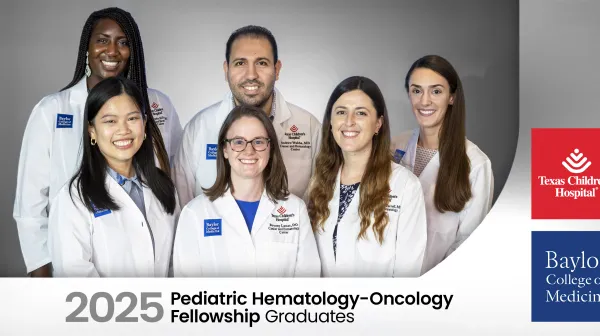Prince Jnoffin is just 1 year old, but he’s already breaking records: In 2022, he became the youngest patient ever diagnosed with glycogen storage disease (GSD) type X, an extremely rare genetic condition. GSD, which primarily affects muscles associated with movement, has only been documented in <10 people to date, according to Claudia Soler-Alfonso, MD, FACMG, geneticist at Texas Children’s Hospital Metabolic Genetics Clinic. The clinic, one of the largest GSD treatment centers in the United States, offers comprehensive medical and dietary therapy to children and adults with metabolic disorders. Global estimates suggest that there are roughly 50 cases of GSD type X. Dr. Soler-Alfonso and her team at Texas Children's diagnosed Jnoffin with the disease following genetic testing, initiated after his pediatrician observed tongue fasciculations when he was 9 months old.
What is GSD?
GSD is a rare metabolic disorder that inhibits the body’s ability to use glycogen, the main storage form of glucose in the body. Children with the disease are missing an enzyme required to break down glycogen, causing excess glycogen in the body, often in the liver and muscles. Typically, both parents are genetic carriers of the condition, with one copy of a misspelled gene that can cause GSD alongside a normal copy. When both parents pass on the misspelled gene to the child, no normal copy exists, causing GSD.
Because multiple enzymes are used to process glycogen, GSD has several different types. While the team at Texas Children’s treats about 70 patients with GSD, Jnoffin’s type — “X” — is caused by mutations in the PGAM2 gene, which is particularly rare.
“Most of the GSD types we see are liver-based. While these are rare, they occur in about 1 in 100,000 births,” Dr. Soler-Alfonso said. “So GSD type X is very, very rare. I think we first said, ‘Are you sure it’s type X?’”
According to Dr. Soler-Alfonso, GSD type X appears to be a more mild type of GSD, mainly impacting the muscles. It may occur more frequently in African-American patients. Because of its rarity and Jnoffin’s age, his team doesn’t yet know how the condition may affect him later in life, although others with the condition experience muscle aches and pains, particularly after strenuous physical activity. For now, Jnoffin’s team is focusing on ensuring ample intake of protein and good carbohydrates to support his muscles, per the recommendations of the dietitians at the Metabolic Genetics Clinic, as well as educating his medical team to ensure they work together to prevent complications. He may need physical therapy as he begins walking and running, and it’s possible he may be prone to muscle breakdown and subsequent kidney damage later in childhood.
“Every patient is completely different, so treatment is really personalized to the person,” said Brandy Rawls-Castillo, MS, RD, LD, dietitian coordinator at Texas Children’s. “For other types of GSD, fluid and nutrition intake needs can be very intensive with a lot of hands-on support for the medical team and dietitian. For some patients with liver GSD who require feeding every 4 hours around the clock, their glucose levels can drop to 0 if they’re even 10-15 minutes off schedule. It can be extremely demanding on the family.”
Implications for research
The ability to study a real-life type X case will enable physicians and scientists to better understand the condition and its potential treatments. The team at Texas Children’s, which includes eight board-certified biochemical geneticists who function as both clinicians and researchers, plans to document Jnoffin’s case for the next several years.
“We’ll follow him closely for complications and model genetic changes in animal models, such as fruit flies, to study this particular type’s progression,” Dr. Soler-Alfonso said. This research complements other research initiatives aimed at finding new GSD treatments, such as a study examining the off-label use of a diabetes drug as well as a clinical trial using mRNA technology to potentially correct the defect that causes GSD and restore function.
With a dearth of information about GSD type X, Jnoffin could play a pivotal role in physicians’ understanding of the condition, improving diagnostic capabilities as well as the development of new treatments. The team also encourages physicians to keep GSD in mind as a possibility when symptoms arise.
“While GSD is rare, we encourage pediatricians who are seeing frequent hypoglycemia to consider GSD and refer to genetics when appropriate. We’re available to help.”
The Metabolic Genetics Clinic sees patients with urea cycle disorders and other disorders of amino acid metabolism, organic acidemias, fatty-acid oxidation disorders, glycogen storage disorders, lysosomal storage disorders and a variety of other rare inborn errors of metabolism. To refer a patient, complete the Genetics referral form.





